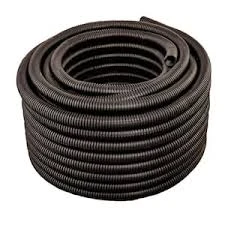synchronous belt wheel
Understanding Synchronous Belt Wheels A Key Component in Mechanical Systems
Synchronous belt wheels, often referred to as timing pulleys, play a crucial role in mechanical systems where precise movement and timing are required. These components are an integral part of synchronous belt drives, which are used in various industrial applications, including automotive, manufacturing, and robotics. In this article, we will delve into what synchronous belt wheels are, how they function, and their advantages in mechanical design.
What Are Synchronous Belt Wheels?
Synchronous belt wheels are toothed pulleys designed to mesh with a toothed belt, also known as a synchronous or timing belt. Unlike traditional V-belts, which rely on friction to transmit motion, synchronous belts operate through the engagement of their teeth with the teeth of the belt. This engagement ensures that there is no slippage between the belt and the wheels, allowing for accurate positioning and synchronization of components.
The design of synchronous belt wheels includes a series of grooves that correspond to the teeth on the belt. These grooves come in various sizes and shapes, tailored to fit specific belts and mechanical requirements. Typically made from durable materials such as aluminum, steel, or reinforced plastic, synchronous belt wheels are engineered to withstand significant torque and stress, ensuring longevity and reliability in operation.
How Do Synchronous Belt Wheels Work?
The functioning of synchronous belt wheels is relatively straightforward yet meticulous. When a motor drives a synchronous belt wheel, the rotation of the wheel turns the connected synchronous belt. Due to the matching teeth between the belt and the wheel, the motion is transmitted accurately without any delays or variations.
For instance, in an automotive engine, synchronized camshafts and crankshaft are crucial for the timing of the engine's operation. The synchronous belt, guided by the pulley or belt wheel system, maintains precise timing, ensuring that the engine's valves open and close at the correct intervals. This synchronization is vital for optimal performance and efficiency, demonstrating the importance of synchronous belt wheels in high-precision applications.
Advantages of Synchronous Belt Wheels
synchronous belt wheel

1. Precision Timing One of the primary advantages of synchronous belt wheels is their ability to maintain precise timing throughout the operation. This is particularly important in systems where accurate rotational positioning is essential.
2. Reduced Slippage Since the operation relies on tooth engagement rather than friction, there is minimal risk of slippage. This characteristic enhances the efficiency of the transmission of motion, especially in high-speed applications.
3. Lower Maintenance Requirements Synchronous belt drives typically require less maintenance compared to chain drives or gear systems. This is due to the absence of lubrication needs and a generally cleaner operation, making them a cost-effective choice in many scenarios.
4. Virtually No Noise Synchronous belts operate quietly, which is a significant advantage in environments where noise is a concern, such as in clean rooms or sound-sensitive applications.
5. Energy Efficiency With reduced slippage and a direct connection due to tooth engagement, synchronous belt systems are generally more efficient than their counterparts. This efficiency translates to lower energy consumption and reduced operational costs.
6. Versatility Synchronous belt wheels can be adapted to various applications, from small machines to large industrial systems. The customizable size, material, and tooth profile allow for flexibility in design.
Conclusion
In conclusion, synchronous belt wheels are indispensable components in modern mechanical systems. Their ability to provide precise movement, reduce maintenance needs, and operate efficiently makes them a popular choice across various industries. Whether in automotive applications, manufacturing processes, or robotics, the role of synchronous belt wheels is vital. As technology advances, the design and materials used in these wheels will continue to evolve, further enhancing their performance and applicability in more demanding environments. Understanding and utilizing these key components can lead to improved system functionality and reliability in countless mechanical applications.








